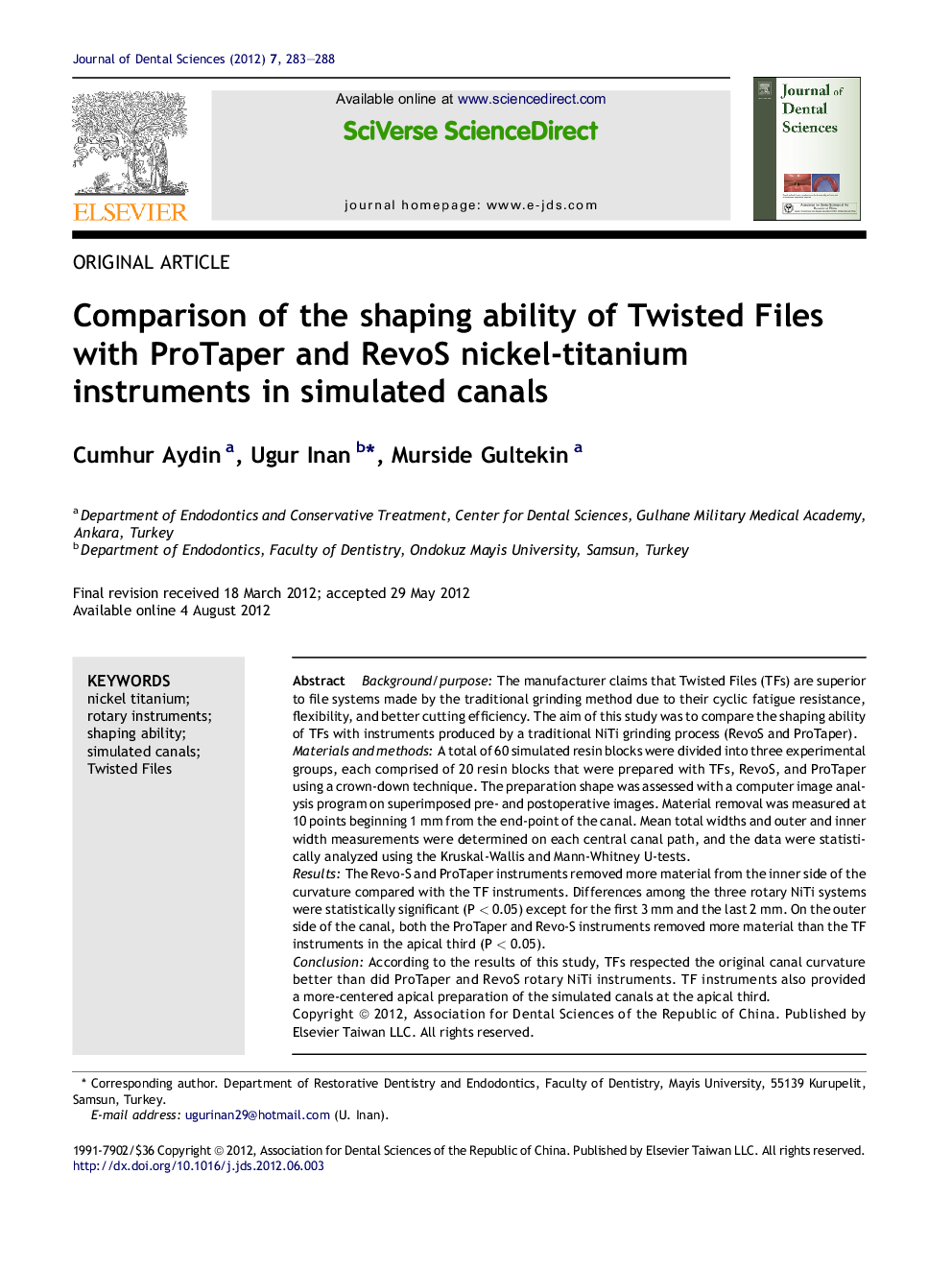| Article ID | Journal | Published Year | Pages | File Type |
|---|---|---|---|---|
| 3144836 | Journal of Dental Sciences | 2012 | 6 Pages |
Background/purposeThe manufacturer claims that Twisted Files (TFs) are superior to file systems made by the traditional grinding method due to their cyclic fatigue resistance, flexibility, and better cutting efficiency. The aim of this study was to compare the shaping ability of TFs with instruments produced by a traditional NiTi grinding process (RevoS and ProTaper).Materials and methodsA total of 60 simulated resin blocks were divided into three experimental groups, each comprised of 20 resin blocks that were prepared with TFs, RevoS, and ProTaper using a crown-down technique. The preparation shape was assessed with a computer image analysis program on superimposed pre- and postoperative images. Material removal was measured at 10 points beginning 1 mm from the end-point of the canal. Mean total widths and outer and inner width measurements were determined on each central canal path, and the data were statistically analyzed using the Kruskal-Wallis and Mann-Whitney U-tests.ResultsThe Revo-S and ProTaper instruments removed more material from the inner side of the curvature compared with the TF instruments. Differences among the three rotary NiTi systems were statistically significant (P < 0.05) except for the first 3 mm and the last 2 mm. On the outer side of the canal, both the ProTaper and Revo-S instruments removed more material than the TF instruments in the apical third (P < 0.05).ConclusionAccording to the results of this study, TFs respected the original canal curvature better than did ProTaper and RevoS rotary NiTi instruments. TF instruments also provided a more-centered apical preparation of the simulated canals at the apical third.
